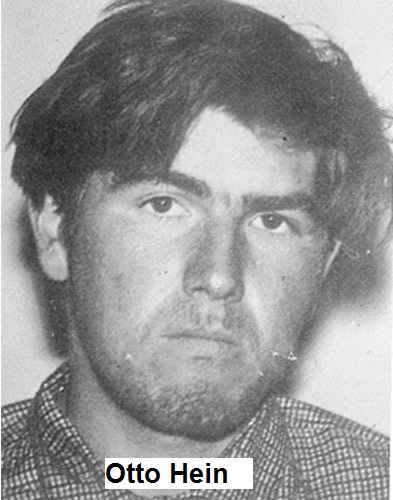 Otto HEIN aka Stephen ADAMAC
- LOCATED SAFE AND WELL
Otto HEIN aka Stephen ADAMAC
- LOCATED SAFE AND WELL

Missing Austrian man found alive in
Italy after 50 years missing in WA outback
Phil Hickey
The West Australian
Sun, 18 July 2021
An Austrian-born man police feared may have fallen victim to a
hitchhiker killer in the WA outback more than 50 years ago has been
found alive and well in Italy.
The Sunday Times can finally reveal the extraordinary story of Otto
Hein, who vanished without a trace in 1969.
Detectives had strong reasons to suspect Mr Hein, who was just
22-years-old when he went missing, might have been murdered after his
car was dumped near the remote town of Menzies in the Goldfields region.
But incredibly, it was not until a fresh investigation in 2019 that Mr
Hein was eventually located in Palermo on the Italian island of Sicily —
a town where he had been living openly for about 40 years.
Now aged in his early 70s, he and his family had no idea he was
considered a missing person.
The remarkable chain of events — never made public until today — stretch
back to May 1969 when Mr Hein, having migrated to Australia with his
parents from Austria, began working at a farm just outside Carnamah,
about 300km north of Perth.
On May 11, 1969, he left the farm in a vehicle, having told his employer
he was going into Carnamah town to pick up mail. But he never returned.
Police stopped him in that vehicle two days later in Norseman but
crucially, Mr Hein gave the officers the false name of Stephen Adamac
which led to decades of confusion about his true identity.
The vehicle Mr Hein was driving in Norseman that day was later found
abandoned just outside Menzies on May 24, 1969. But there was no trace
of him.
That led to grave fears that Mr Hein might have been the victim of a
homicide.
A man had been arrested in Bordertown in South Australia on May 30, 1969
after he had murdered another man who had given him a lift.
The hitchhiker had killed the man who had picked him up three days
earlier before dumping the man’s body in remote bush and driving off in
his vehicle.
Detectives who charged the hitchhiker for that murder became concerned
that he may have also murdered Mr Hein because a map found in his
possession indicated he had also hitch-hiked through Carnamah, the same
town Mr Hein had been working in.
But the hitchhiker provided an alibi which eliminated him as a suspect
in Mr Hein’s disappearance.
Despite regular checks over the next five decades it was not until March
2019 cold case homicide investigators cracked the case.
The breakthrough finally came when an analyst assigned to gather
intelligence confirmed Mr Hein’s identity and discovered he had four
brothers living in Victoria.
When contacted, the brothers, much to the astonishment of police,
revealed that their “missing” brother was alive and living with his
family in Italy.
They also revealed it was not uncommon for Mr Hein to disappear in the
1960s and 70s and not tell people where he was going.
Eventually, in July 2019, detectives in Perth were able to contact Mr
Hein on Skype at his home in Italy.
Although he had aged five decades, investigators could see that Mr Hein
still resembled a photo of his younger self in the police cold case
file.
In his interview with WA Police Mr Hein said after his encounter with
police in Norseman, he got “scared” as he did not have a driver’s
licence.
He recalled driving out of the town until he ran out of petrol before
abandoning the vehicle and hitch-hiking to the Northern Territory.
He then travelled around Australia before leaving sometime in 1970. Upon
his return to Austria he did national service before settling in Italy
where he met his wife and where he has lived ever since.
Detective Sergeant Jude Seivwright, officer in charge of the WA Police
Missing Person Team, said the case was a prime example of officers never
giving up on historic cases.
“We ensure missing persons are not forgotten and police do not stop
investigating these cases,” she said. “Each missing persons case is
unique and the case of Mr Hein is certainly unusual.”
There are 336 long term missing people in WA, some of which date back to
1952.
Otto HEIN aka Stephen ADAMAC
- LOCATED SAFE AND WELL
